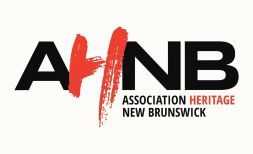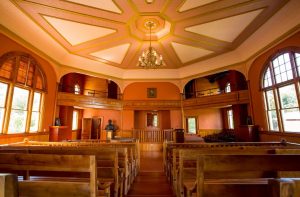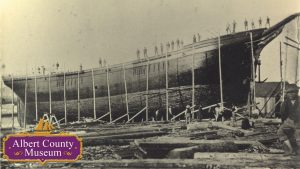 By Janet Clouston, Managing Director of the Albert County Historical Society, Museum and RB Bennett Centre
By Janet Clouston, Managing Director of the Albert County Historical Society, Museum and RB Bennett Centre
These are exciting times to be in the field of heritage and culture. There are a number of reasons why this is the case and certainly demographics play an important role. Baby-boomers are retiring, with time to travel and a desire to stay mentally active and enjoy “life-long learning”. There is no better place than through our museum and historic sites! Along with demographics are trends that can also increase visitors to our facilities, including an increased interest in family history and genealogy through websites like ancestry.ca. There is also a trend called “experiential tourism” where visitors want to feel they are a part of the place they visit, to really feel connected to the story, and we can offer this like no other. Lastly is one that is very exciting to marketing people like myself: “high tech, high touch”. This trend is very important as the digital age we are in makes up for the “high tech” side of the equation, and we are providing the “high touch” side of things through our exhibits, artifacts and storytelling. People are craving an authentic learning experience, and no one offers that more than we do!
And then the big question is this: how do we turn all of this into marketing success for our museums, cultural spaces and historic sites? For many people in our line of work, and for many non-profits and NGO’s the world over, we are staffed with historians, scientists, academics and researchers. Sales and marketing can be a giant mystery, and often a skill set that seems to work in the business world, but can be difficult for non-profits. I am here to let you know that marketing and growing our audience is very achievable –you just need a good plan and a wiliness to spend time and effort. People want what we have to offer, and we need the public to support us to be financially sustainable. We are also fundraising, or as I call it “friendraising” and this also needs marketing effort. All we need to do is do a better job of inviting them to visit! So here is how we do just that.
Images above of the Albert County Court House built in 1904
Step 1: What is unique about what you have to offer? In marketing jargon, this is called a “unique selling proposition” and it is important that you become clear about yours and put this on all of your marketing and promotional messages. You may need to do a bit of brainstorming on this, and work to come up with a few compelling reasons for people to tour your museum, but it is important to highlight the major ones. Going through guest testimonials is a great source of information – and you can use a few of them in your marketing message. Ask guests as they are leaving what they liked the most about their experience. Sites like TripAdvisor are successful for a reason!
Step 2: Who is the audience you are trying to attract? This is vital to success in any marketing initiative, program or fundraising effort. Know your audience! There is an expression I like to use when discussing this: find out who your best customer is, and find more people just like them! Marketing is a lot like playing darts and you need to know which area of the board you are aiming for if you plan to hit the bullseye! Where are visitors from, what is their average age, how did they find out about you, what else do they like to do in their spare time. Asking these questions will help you better understand where to spend your marketing dollars and your public relations energy.
Step 3: What are you doing to invite them to visit? Like all aspects of running your museum or cultural space, this needs careful planning and you need the put time and energy in your “invitation”. Traditional media (print and newspapers)still have a large audience, as does radio. I work hard on the “earned media” side of this, through media relations, press releases and building up a good media list. Getting on visitor maps, and local publications is really important as is a newsletter. Your website and social media round out the marketing mix along with networking and paying calls to local businesses who can refer visitors to you. When people ask “what is there to do around here” your museum needs to be on that list. Remember that word of mouth is still the most powerful marketing there is. I really work on the friend and family market– when people have visitors they look for things to do with their guests in their area, and your museum or cultural site is perfect for sharing the history of the area with their visitors. When you have a captive audience for events or programs, make sure they know future events and projects. And make sure you are involved in your local Chamber of Commerce!
Step 4: Put your plan in writing and make sure to get input from staff, volunteers and Board Members; they care as much as you do about your organization succeeding and probably will have great ideas. And once your plan is completed, take action! Measure your results and focus on what is working best for you. We created $1.00flyers and I delivered them to local hotels, restaurants and shops within a 10 minute drive from our museum and was amazed at how many visitors we got from this. I gave a gift basket to the business who sent us the most as a thank you.
Happy marketing – I hope to hear some of your success stories!
Janet Clouston is the Managing Director of the Albert County Historical Society, Museum and RB Bennett Centre. Her marketing career has been in the area of hospitality and tourism and has worked with non-profits organizations and community groups for over 30 years. She has received several awards in British Columbia for her work and marketing initiatives.





